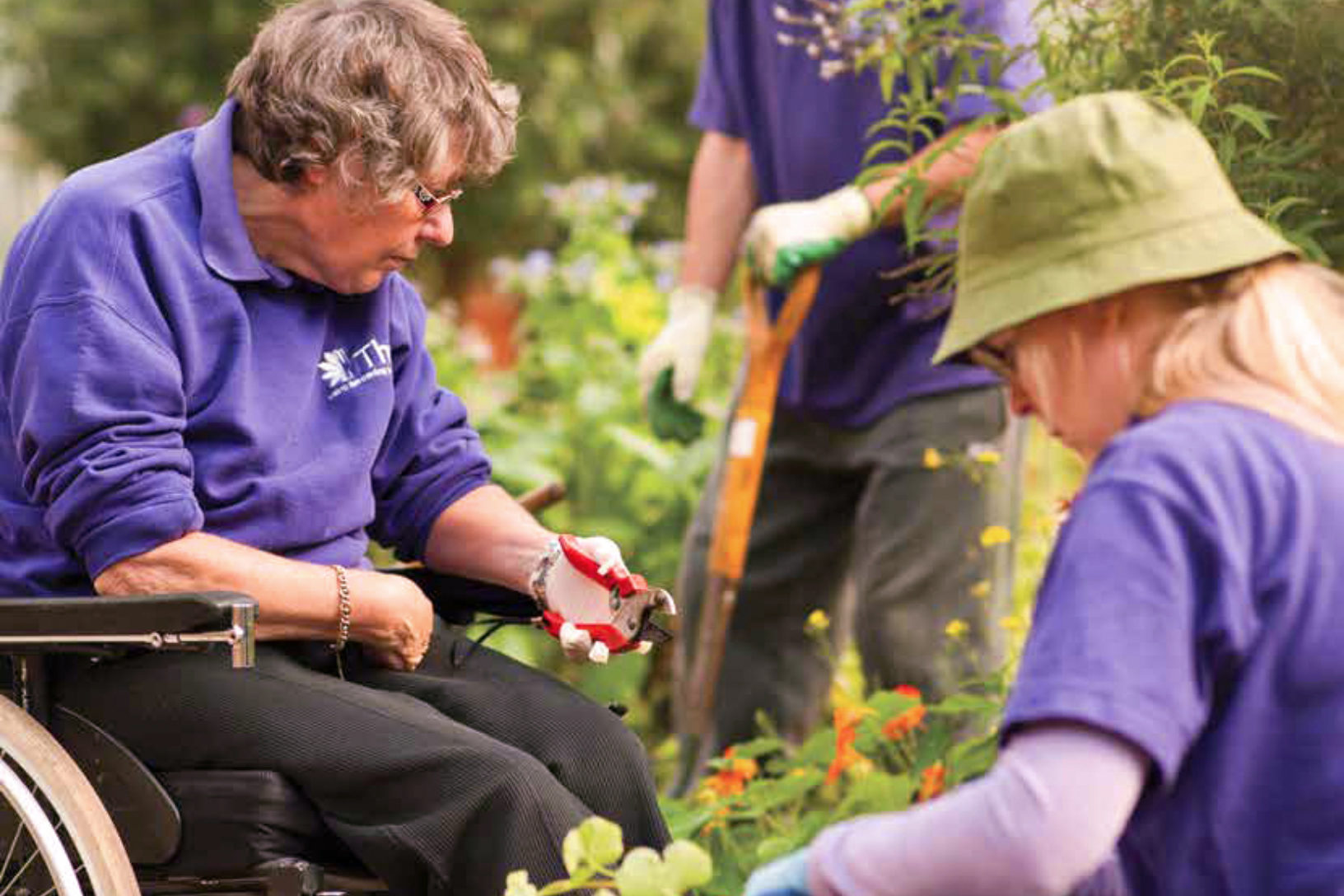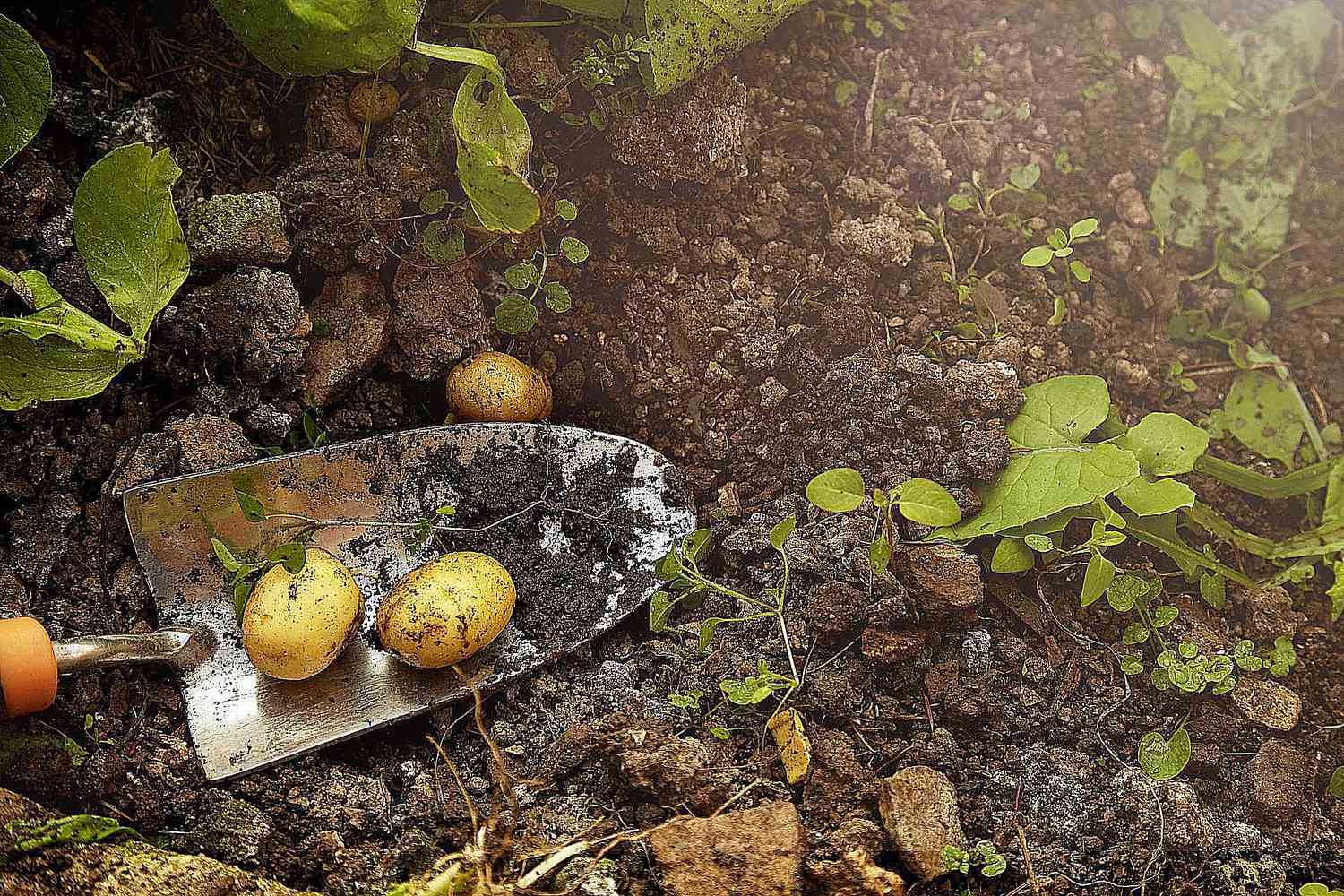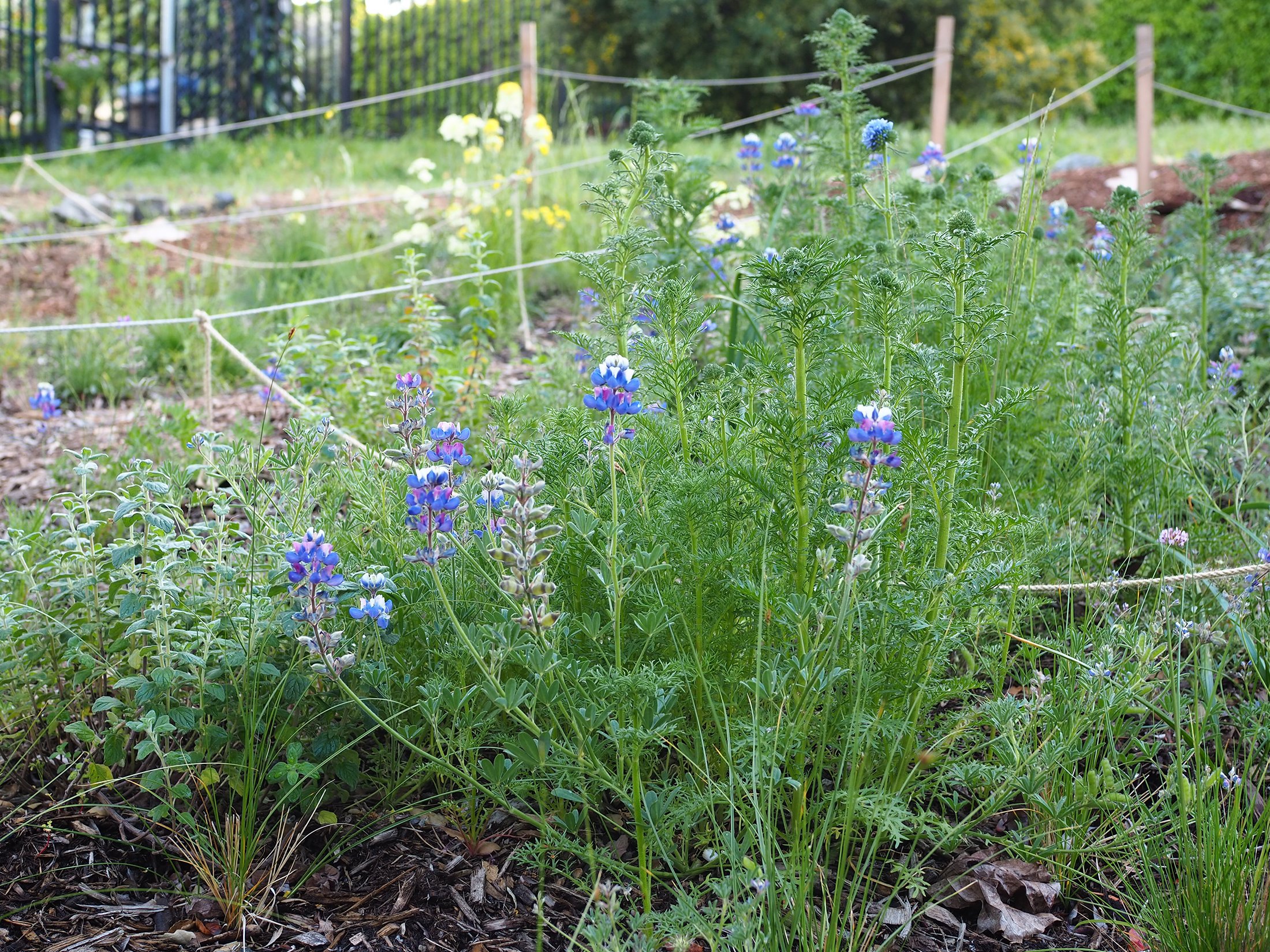Home>Gardening News and Trends>Latest News>What Is Horticulture Therapy


Latest News
What Is Horticulture Therapy
Modified: January 22, 2024
Discover the Latest News on Horticulture Therapy and its benefits. Learn how nature-based therapeutic practices can improve mental health and overall well-being.
(Many of the links in this article redirect to a specific reviewed product. Your purchase of these products through affiliate links helps to generate commission for Chicagolandgardening.com, at no extra cost. Learn more)
Table of Contents
Introduction
Horticulture therapy, also known as horticultural therapy or garden therapy, is a form of therapeutic practice that utilizes plants, gardening activities, and the natural environment to improve the physical, mental, and emotional well-being of individuals. It is a holistic approach that combines elements of nature, science, and human interaction to promote healing and personal growth.
At its core, horticulture therapy recognizes the innate connection between humans and plants. For centuries, people have found solace and rejuvenation in nature. The practice of horticulture therapy harnesses this inherent bond to facilitate healing, relaxation, and personal development.
Horticulture therapy is not a new concept. It has been used for thousands of years in different cultures around the world. The ancient Egyptians, Persians, Greeks, and Romans all recognized the therapeutic benefits of working with plants and gardens. However, it wasn’t until the 19th century that horticulture therapy began to gain recognition as a formal therapeutic practice.
Today, horticulture therapy is widely acknowledged and embraced as a valuable form of therapy in healthcare, rehabilitation centers, schools, and community programs. Its effectiveness has been supported by an increasing body of scientific research and anecdotal evidence.
The benefits of horticulture therapy are far-reaching and can positively impact individuals of all ages and abilities. Whether it is helping individuals with physical disabilities regain mobility and coordination, supporting individuals with mental health issues to reduce stress and anxiety, or simply providing a space for individuals to connect with nature and find inner peace, horticulture therapy has proven to be a powerful tool for healing and personal growth.
In this article, we will explore the definition of horticulture therapy, delve into its rich history, discuss its wide-ranging benefits, examine how horticulture therapy works, explore the different types of horticulture therapy, and provide examples of horticulture therapy programs that showcase its effectiveness. By the end, you will have a deeper understanding of this unique therapeutic practice and how it can positively impact individuals’ lives.
Definition of Horticulture Therapy
Horticulture therapy is a specialized form of therapy that utilizes plants, gardening activities, and the natural environment as a means of promoting physical, mental, and emotional well-being. It is an interdisciplinary practice that combines elements of horticulture, botany, psychology, and rehabilitation.
At its core, horticulture therapy recognizes the therapeutic benefits of engaging with plants and nature. It harnesses the power of nature’s healing qualities and the sensory experiences associated with gardening to enhance the overall health and quality of life for individuals. The interactive and hands-on nature of horticulture therapy allows participants to actively engage in activities such as planting, cultivating, and harvesting plants, which can have a profound impact on their well-being.
Through the use of plants and gardening activities, horticulture therapy aims to achieve several therapeutic goals. It can help individuals develop and improve their physical abilities, such as fine motor skills, coordination, and strength. It also provides opportunities for sensory stimulation, including tactile, visual, auditory, and olfactory experiences.
In addition to physical benefits, horticulture therapy promotes mental and emotional well-being. It can reduce stress, anxiety, and symptoms of depression by providing a calming and peaceful environment. The act of caring for and nurturing plants also fosters a sense of purpose, responsibility, and accomplishment, which can boost self-esteem and confidence.
Horticulture therapy can be tailored to meet the specific needs and abilities of individuals, making it accessible for people from all walks of life. It is utilized in various settings, including hospitals, rehabilitation centers, schools, prisons, nursing homes, and community programs.
Trained horticulture therapists, also known as horticulturalists or garden therapists, guide participants in horticulture therapy sessions. These professionals have a deep understanding of horticulture and the therapeutic benefits associated with it. They create structured programs that address specific goals and objectives, ensuring that participants have a rewarding and meaningful experience.
Overall, horticulture therapy offers a unique and effective approach to healing and personal growth. By utilizing the power of plants and nature, it provides a nurturing and therapeutic environment for individuals to enhance their physical, mental, and emotional well-being.
History of Horticulture Therapy
The use of plants and gardens as a therapeutic tool traces back thousands of years across various cultures. Ancient civilizations such as the Egyptians, Persians, Greeks, and Romans recognized the healing power of plants and incorporated gardens into their healthcare practices. However, it wasn’t until the 19th century that horticulture therapy began to emerge as a more formalized practice.
In the 1800s, Dr. Benjamin Rush, a physician and signer of the Declaration of Independence, observed the positive effect of gardening on mental health. He recognized that individuals who engaged in gardening activities experienced improvements in their mental well-being. Dr. Benjamin Rush’s observations laid the foundation for horticulture therapy as a therapeutic practice.
During the early 20th century, horticulture therapy gained further recognition as a result of the work of pioneers such as Dr. Karl Menninger and Dr. William Klenz. They emphasized the importance of engaging patients in meaningful and purposeful work, including gardening, as part of their treatment plans in mental health institutions.
The benefits of horticulture therapy in the rehabilitation of World War I veterans were also observed during this time. As soldiers returned from war, engaging in gardening activities was found to help them rebuild physical strength, improve coordination, and alleviate symptoms of depression and post-traumatic stress disorder.
In the mid-20th century, the field of horticulture therapy continued to evolve, and organizations such as the American Horticultural Therapy Association (AHTA) were established to promote research, education, and the professional practice of horticulture therapy. These developments led to the recognition of horticulture therapy as a legitimate and effective form of therapy.
Today, horticulture therapy is practiced worldwide in various settings, including hospitals, rehabilitation centers, schools, prisons, nursing homes, and community programs. It continues to gain recognition for its ability to improve physical, mental, and emotional well-being.
Research on horticulture therapy has further validated its effectiveness. Studies have shown that engaging in gardening activities can reduce stress levels, lower blood pressure, improve cognitive function, and enhance overall mood and well-being. These findings have contributed to the integration of horticulture therapy into mainstream healthcare and treatment approaches.
The rich history of horticulture therapy serves as a testament to its enduring benefits and its ability to provide healing and personal growth. With each passing day, more individuals are discovering the profound impact that connecting with plants and nature can have on their well-being.
Benefits of Horticulture Therapy
Horticulture therapy offers a wide range of benefits that can positively impact individuals’ physical, mental, and emotional well-being. Through engaging in gardening activities and connecting with plants and nature, participants can experience both immediate and long-term positive effects.
One of the key benefits of horticulture therapy is its ability to improve physical health. Engaging in gardening activities provides opportunities for physical exercise, promoting increased mobility, flexibility, and strength. Activities such as planting, pruning, and harvesting require fine motor skills and hand-eye coordination, which can be particularly beneficial for individuals with physical disabilities or limitations.
Furthermore, horticulture therapy offers sensory stimulation, which can have a positive impact on individuals’ cognitive abilities. The sights, sounds, smells, and textures of the garden environment engage the senses, promoting sensory integration and cognitive function. This can help improve memory, attention, and problem-solving skills.
In addition to physical and cognitive benefits, horticulture therapy also promotes emotional well-being. Spending time in a garden setting has been shown to reduce stress levels and promote relaxation. The natural environment and the act of gardening can have a calming effect, allowing individuals to unwind and alleviate anxiety and tension.
Gardening also provides a sense of purpose and accomplishment. The act of nurturing plants, watching them grow, and reaping the rewards of a bountiful harvest can boost self-esteem and self-confidence. It provides individuals with a tangible reminder of their capabilities and their connection to the natural world.
Horticulture therapy has proven to be particularly effective in supporting individuals with mental health challenges. It can reduce symptoms of anxiety, depression, and post-traumatic stress disorder. The act of engaging with nature and plants has a grounding effect, promoting mental well-being and fostering a sense of peace and serenity.
Furthermore, horticulture therapy can provide social benefits by fostering a sense of community and connection. Group gardening activities encourage interpersonal interaction and teamwork, allowing individuals to build relationships and develop social skills. The shared experience of working together in a garden setting can create a sense of belonging and support.
Overall, the benefits of horticulture therapy are diverse and multi-faceted. It promotes physical health, cognitive function, emotional well-being, and social connection. By engaging with plants and nature, individuals can experience profound improvements in their overall quality of life and find a sense of purpose, joy, and renewal.
How Horticulture Therapy Works
Horticulture therapy works by utilizing the therapeutic benefits of plants, gardening activities, and the natural environment to improve the physical, mental, and emotional well-being of individuals. It combines elements of science, nature, and human interaction to create a holistic and healing experience.
One of the key aspects of horticulture therapy is the sensory experience it provides. Engaging with plants and the garden environment stimulates the senses, including sight, smell, touch, and even sound. The vibrant colors of flowers, the fragrant aroma of herbs, the feel of soil between the fingers, and the sound of leaves rustling in the breeze all contribute to a sensory-rich experience that promotes relaxation and stimulates cognitive function.
Through hands-on gardening activities, participants actively engage in the process of planting, cultivating, and tending to plants. This physical involvement not only provides exercise but also fosters a sense of purpose and accomplishment. Seeing the results of their efforts as plants grow and thrive can boost self-esteem and confidence.
The act of caring for plants and being responsible for their well-being also helps individuals develop a sense of nurturing and patience. Engaging in gardening activities teaches them to be mindful, present in the moment, and attentive to the needs of the plants. These skills can be transferred to daily life, helping individuals cultivate a sense of mindfulness and patience in their interactions with others and in managing their own challenges.
Horticulture therapy also taps into the therapeutic benefits of nature itself. Spending time in a garden setting provides a natural and serene environment that promotes relaxation and reduces stress. The tranquility of the natural surroundings acts as a respite from the pressures of daily life, allowing individuals to find moments of calmness and peace.
In addition, horticulture therapy encourages social interaction and interpersonal connections. Group gardening activities provide opportunities for individuals to work together, share experiences, and support each other. This social aspect of horticulture therapy fosters a sense of community and belonging, reducing feelings of isolation and promoting emotional well-being.
A trained horticulture therapist guides participants through horticulture therapy sessions, tailoring activities to meet the specific needs and goals of each individual or group. These professionals have in-depth knowledge of horticulture and the therapeutic benefits associated with it. They provide guidance, support, and education to ensure that participants have a safe and meaningful experience.
Overall, horticulture therapy works by providing a nurturing and therapeutic space where individuals can connect with nature, engage in meaningful and purposeful activities, and experience the physical, mental, and emotional benefits that come with caring for plants and being in a garden environment.
Types of Horticulture Therapy
Horticulture therapy encompasses a range of approaches and techniques that can be tailored to meet the diverse needs and abilities of individuals. Various types of horticulture therapy are employed to address specific therapeutic goals and objectives. Here are some common types of horticulture therapy:
- Therapeutic Gardening: This is the most basic and widely practiced form of horticulture therapy. It involves engaging in gardening activities, such as planting, weeding, and harvesting, to promote physical and mental well-being. Therapeutic gardening can be done individually or in group settings and is adaptable to a wide range of ages and abilities.
- Horticultural Skill Development: This type of horticulture therapy focuses on teaching individuals practical gardening skills. Participants learn about various gardening techniques, plant identification, and plant care. This form of therapy can enhance self-confidence, increase independence, and provide potential vocational training for individuals interested in pursuing careers in horticulture.
- Sensory Gardens: Sensory gardens are designed specifically to engage the senses, providing a stimulating and therapeutic experience. These gardens incorporate a variety of plants with different colors, textures, fragrances, and even edible components. Sensory gardens can benefit individuals with sensory impairments, cognitive disabilities, or those who simply seek sensory stimulation and relaxation.
- Therapeutic Landscaping: Therapeutic landscaping involves the design and creation of outdoor spaces that promote healing and well-being. These spaces are intentionally designed to provide tranquility, accessibility, and multi-sensory experiences. Therapeutic landscapes can be found in hospitals, rehabilitation centers, and other healthcare settings to provide a serene and therapeutic environment for patients and staff.
- Community Gardening: Community gardening programs bring individuals together to work on a shared garden space, fostering social connections and community engagement. Participants collaborate on garden projects and share the responsibilities and benefits of the garden. Community gardening promotes social interaction, encourages a sense of belonging, and builds relationships within the community.
- Greenhouse Therapy: Greenhouses provide controlled environments that allow individuals to engage in horticulture therapy activities year-round. Greenhouse therapy is particularly beneficial in colder climates or for individuals with limited outdoor accessibility. It enables the cultivation and care of plants in a protected and nurturing environment.
These are just a few examples of the types of horticulture therapy available. Each type is tailored to meet specific therapeutic goals and can be adapted to accommodate the unique needs and abilities of individuals. The versatility of horticulture therapy ensures that it can be effectively utilized across a wide range of settings and populations, promoting healing, personal growth, and overall well-being.
Examples of Horticulture Therapy Programs
Horticulture therapy programs are implemented in various settings and cater to diverse populations. Here are a few examples of successful horticulture therapy programs:
- Therapeutic Horticulture Program at a Rehabilitation Center: In a rehabilitation center, a horticulture therapy program may be designed to assist individuals recovering from physical injuries or surgeries. Participants engage in activities such as planting, watering, and tending to plants to improve motor skills, enhance coordination, and increase muscle strength. This program helps individuals regain physical capabilities and improve overall well-being in a nurturing and therapeutic environment.
- Children’s Horticulture Therapy Program: Horticulture therapy programs for children focus on providing therapeutic activities and experiences in a garden setting. These programs aim to promote motor skills development, sensory stimulation, and emotional well-being. Children may learn about different types of plants, engage in hands-on gardening activities, and explore nature through various sensory experiences, fostering growth, and development.
- Prison Horticulture Therapy Program: Horticulture therapy programs have been successfully implemented in prisons as a means of rehabilitation and reducing recidivism rates. In these programs, inmates engage in gardening activities, developing skills in horticulture while experiencing the therapeutic benefits of working with plants and the natural environment. The program promotes positive behavioral changes, boosts self-esteem, and provides individuals with a sense of purpose and responsibility.
- Senior Garden Club: Senior garden clubs or horticulture therapy programs cater to older adults in retirement homes or community centers. These programs offer a space for seniors to connect with nature, engage in gardening activities, and socialize with peers. Gardening provides physical exercise, cognitive stimulation, and emotional support, enhancing overall well-being for older adults who may face challenges such as loneliness or physical limitations.
- Therapeutic Community Farm: Community farms that incorporate horticulture therapy offer opportunities for individuals with disabilities or mental health challenges to engage in meaningful work and develop vocational skills. These farms provide vocational training, social support, and a sense of belonging. Participants learn about sustainable farming practices, cultivate crops, and may even have the opportunity to sell their produce within the community, promoting independence and self-confidence.
- Veterans’ Horticulture Therapy Program: Horticulture therapy programs tailored for veterans help address the unique challenges they may face after serving in the military. These programs provide a peaceful and therapeutic environment for veterans to engage in gardening activities, fostering connection with nature and promoting mental well-being. Participants have the opportunity to learn new skills, build camaraderie with fellow veterans, and develop coping strategies for managing post-traumatic stress disorder and other mental health conditions.
These examples illustrate the diverse applications and effectiveness of horticulture therapy across different populations and settings. Each program is designed with a specific focus and goals to address the unique needs and abilities of the participants. With the guidance of trained horticulture therapists, these programs provide individuals with opportunities for personal growth, healing, and a deeper connection with nature.
Conclusion
Horticulture therapy is a powerful and effective form of therapy that harnesses the therapeutic benefits of plants, gardening activities, and the natural environment. It offers a holistic approach to improving physical, mental, and emotional well-being and has been practiced for centuries across different cultures.
The use of horticulture therapy has a rich history that dates back to ancient civilizations, but it wasn’t until the 19th century that it began to gain recognition as a formal therapeutic practice. Today, horticulture therapy is widely embraced and utilized in a variety of settings, including healthcare, rehabilitation centers, schools, prisons, and community programs.
The benefits of horticulture therapy are numerous and encompass various aspects of well-being. It improves physical health by promoting exercise, coordination, and strength. It stimulates the senses, enhances cognitive function, and reduces stress, providing mental and emotional well-being. Additionally, horticulture therapy fosters social connection, a sense of purpose, and personal growth.
There are several types of horticulture therapy programs that address specific goals and populations. Therapeutic gardening, sensory gardens, therapeutic landscaping, and community gardening are just a few examples. These programs can be tailored to meet the unique needs and abilities of individuals, promoting healing, growth, and independence.
The success of horticulture therapy programs can be seen in various examples, such as rehabilitation centers, children’s programs, prison programs, senior garden clubs, community farms, and veterans’ programs. These programs serve to improve the well-being of individuals, fostering physical, mental, and emotional health while nurturing a connection with nature.
In conclusion, horticulture therapy is a dynamic and effective therapeutic practice that engages individuals in meaningful, sensory-rich activities to promote healing, personal growth, and overall well-being. By connecting with plants and the natural environment, participants experience the profound benefits that horticulture therapy offers, creating opportunities for transformation and an enhanced quality of life.







